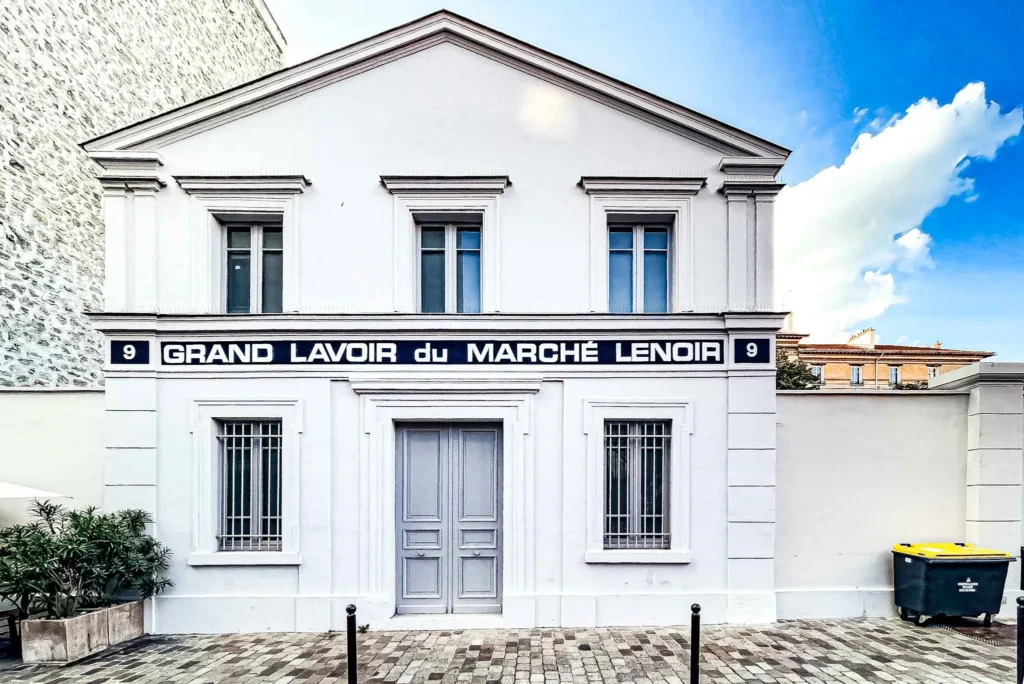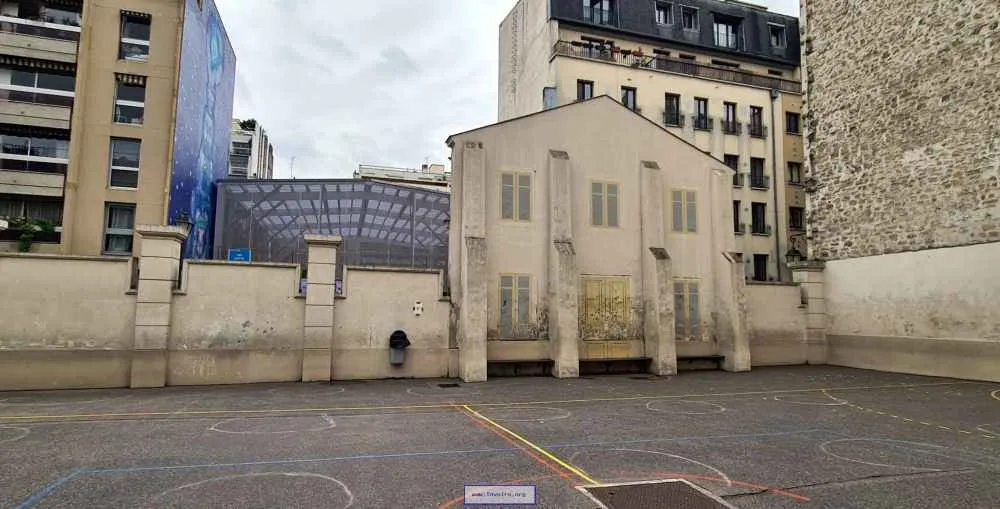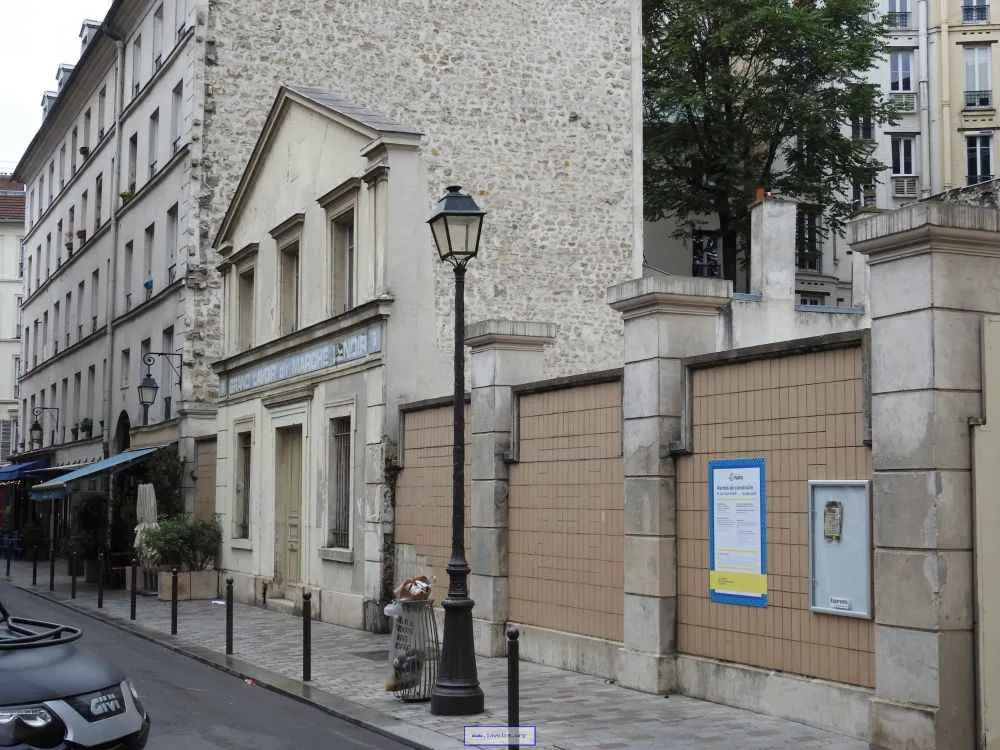On rue de Cotte in Paris’s 12th arrondissement, a white neoclassical façade rises with no building behind it—like a forgotten stage set. It is all that remains of the former Grand Lavoir du Marché Lenoir (Great Washhouse of the Lenoir Market), a vestige of the past that survives embedded in the perimeter wall of a school, as if time had flattened it into two dimensions.
A building that’s no longer there
This washhouse was built in 1830 at number 9 of the same street. It was one of the most modern public facilities of its time: featuring a structure made of wood and metal, a ventilation system using louvered shutters, a drying room with oak framing, a boiler, and a brick chimney. Housewives and laundresses from the neighborhood came here to wash clothes with access to hot water—at a time when there were barely ninety lavoirs across all of Paris.
Over time, the site went through transformations. In the 1960s, it became an industrial laundry, and eventually closed in 1977—just like nearly all lavoirs in Paris, which gradually disappeared with the rise of automatic washing machines.
A piece almost lost
In the 1980s, the city planned to demolish the building to make space for social housing and a daycare center. But pressure from local residents, determined to preserve this piece of working-class history, led to the façade being granted Historical Monument status in 1988.
As a compromise, the façade was moved 40 meters—from number 9 to number 3—to be integrated into the wall of a neighboring school. The move was completed in a single morning using a rail system. And so, what was once a living, functional structure became a kind of urban backdrop: flat, hollow, yet full of memory.
The last witness
This ghostly façade is the last surviving piece of the more than 300 lavoirs that once existed across the city. Today, though it no longer serves its original purpose, it still tells a story: of the invisible labor of thousands of women, of a practical, working-class Paris, and of a heritage that nearly vanished.Standing in front of it, it’s hard not to feel like you’re looking at the entrance to an imaginary building. But that, perhaps, is exactly its power: to remind us of what no longer exists.




